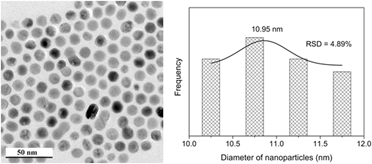Crossref Citations
This article has been cited by the following publications. This list is generated based on data provided by
Crossref.
Tomotoshi, Daisuke
and
Kawasaki, Hideya
2020.
Surface and Interface Designs in Copper-Based Conductive Inks for Printed/Flexible Electronics.
Nanomaterials,
Vol. 10,
Issue. 9,
p.
1689.
Fan, Xinzhen
Yahia, L’Hocine
and
Sacher, Edward
2021.
Antimicrobial Properties of the Ag, Cu Nanoparticle System.
Biology,
Vol. 10,
Issue. 2,
p.
137.
Tomotoshi, Daisuke
Oogami, Rika
and
Kawasaki, Hideya
2021.
Highly Conductive, Flexible, and Oxidation-Resistant Cu-Ni Electrodes Produced from Hybrid Inks at Low Temperatures.
ACS Applied Materials & Interfaces,
Vol. 13,
Issue. 17,
p.
20906.
Pourjafari, Mozhgan
Ghane, Masood
Kaboosi, Hami
Sadeghi, Babak
and
Rezaei, Abolhasan
2022.
Antibacterial Properties of Ag–Cu Alloy Nanoparticles Against Multidrug-Resistant Pseudomonas aeruginosa Through Inhibition of Quorum Sensing Pathway and Virulence-Related Genes.
Journal of Biomedical Nanotechnology,
Vol. 18,
Issue. 4,
p.
1196.
Tao, Yujie
Zhou, Fang
Wang, Kaixin
Yang, Dequan
and
Sacher, Edward
2022.
AgCu NP Formation by the Ag NP Catalysis of Cu Ions at Room Temperature and Their Antibacterial Efficacy: A Kinetic Study.
Molecules,
Vol. 27,
Issue. 20,
p.
6951.
Bello-Lopez, J M
Silva-Bermudez, P
Prado, G
Martínez, A
Ibáñez-Cervantes, Gabriela
Cureño-Díaz, Mónica Alethia
Rocha-Zavaleta, L
Manzo-Merino, J
Almaguer-Flores, A
Ramos-Vilchis, C
and
Rodil, S E
2022.
Biocide effect against SARS-CoV-2 and ESKAPE pathogens of a noncytotoxic silver–copper nanofilm.
Biomedical Materials,
Vol. 17,
Issue. 1,
p.
015002.
Boubkr, Lahcen
Bhakta, Arvind K.
Snoussi, Youssef
Moreira Da Silva, Cora
Michely, Laurent
Jouini, Mohamed
Ammar, Souad
and
Chehimi, Mohamed M.
2022.
Highly Active Ag-Cu Nanocrystal Catalyst-Coated Brewer’s Spent Grain Biochar for the Mineralization of Methyl Orange and Methylene Blue Dye Mixture.
Catalysts,
Vol. 12,
Issue. 11,
p.
1475.
Balkan, Timuçin
Küçükkeçeci, Hüseyin
Aksoy, Dilan
Harfouche, Messaoud
Metin, Önder
and
Kaya, Sarp
2022.
Ag/AgCl clusters derived from AgCu alloy nanoparticles as electrocatalysts for the oxygen reduction reaction.
Sustainable Energy & Fuels,
Vol. 6,
Issue. 10,
p.
2593.
Sarker, Md. Zakaria
Rahman, Md. Mahbubor
Minami, Hideto
Sarker, Md. Samiul Islam
Islam, Md. Shahidul
and
Ahmad, Hasan
2023.
A potential recyclable catalyst: In situ growth of bimetallic Cu-Ag nanoalloy on the magnetic SiO2/Fe3O4-SiO2-NH2 nanocomposite support using a green approach.
Colloids and Surfaces A: Physicochemical and Engineering Aspects,
Vol. 668,
Issue. ,
p.
131447.
Liu, Zhenxiang
Wang, Kaijun
Wang, Kaizhao
Deng, Huaming
Zhang, Weijun
and
Hu, Jin
2023.
Effect of surfactants on the chemical preparation of tin-silver-copper nanoparticles.
Journal of Alloys and Compounds,
Vol. 968,
Issue. ,
p.
172311.
Bogatyrenko, Sergiy I.
Kryshtal, Aleksandr P.
and
Kruk, Adam
2023.
Effect of Size on the Formation of Solid Solutions in Ag–Cu Nanoparticles.
The Journal of Physical Chemistry C,
Vol. 127,
Issue. 5,
p.
2569.
Deka, Juti Rani
Saikia, Diganta
Cheng, Tsun-Hao
Kao, Hsien-Ming
and
Yang, Yung-Chin
2023.
Bimetallic AgCu nanoparticles decorated on zeolitic imidazolate framework derived carbon: An extraordinarily active and recyclable nanocomposite catalyst for reduction of nitroarenes and degradation of organic dyes.
Journal of Environmental Chemical Engineering,
Vol. 11,
Issue. 3,
p.
109777.
Zhang, Yu
Yu, Xianchong
Chen, Ziyuan
Wu, Song
Lai, Haiqi
Ta, Shiwo
Lin, Tingyu
Yang, Guannan
and
Cui, Chengqiang
2023.
Synthesis of Imidazole-Compound-Coated Copper Nanoparticles with Promising Antioxidant and Sintering Properties.
Micromachines,
Vol. 14,
Issue. 11,
p.
2079.
Li, Meng
Hu, Yue
Dong, Gang
Wu, Tianci
and
Geng, Dongsheng
2023.
Achieving Tunable Selectivity and Activity of CO2 Electroreduction to CO via Bimetallic Silver–Copper Electronic Engineering.
Small,
Vol. 19,
Issue. 15,
Noua, Abd Elouahab
Kaya, Dogan
Sigircik, Gokmen
Tuken, Tunc
Karadag, Faruk
and
Ekicibil, Ahmet
2024.
Enhanced photocatalytic activity in AgCu-decorated ZnO nanoparticles under UV and sunlight.
Journal of Materials Science: Materials in Electronics,
Vol. 35,
Issue. 18,
Videira, Vanessa de Cassia Gomes
Harada, Bruna Naemi
Vital, Vitor Gonçalves
da Silva, Ricardo Alexandre Galdino
de Vasconcellos, Suzan Pantaroto
and
Pellosi, Diogo Silva
2024.
Structural and antibacterial evaluation of copper, silver, and bimetallic silver/copper nanoalloys synthesized in chitosan biopolymer.
Next Materials,
Vol. 3,
Issue. ,
p.
100071.
Tran, Quoc Vinh
Do, Dinh Trung
Thao Bui, Thi Thu
Duy, Le Thai
Dang, Vinh Quang
Tsai, Cheng-Kuo
Horng, Jao-Jia
Nguyen, Thanh Tam
and
Tran, Cong Khanh
2024.
Green and low-temperature synthesis of homogeneously alloyed AgCu nanoparticles supported on SiO2 for antibacterial and antifouling activities.
Journal of Alloys and Compounds,
Vol. 980,
Issue. ,
p.
173600.
Gazi, Md Jahiruddin
Khurana, Deepak
Kaishyop, Jyotishman
Khan, Tuhin Suvra
Bhandari, Sahil
and
Bordoloi, Ankur
2024.
Solution combustion derived nanoalloys: Robust and efficient catalyst systems for partial oxidation of methane.
International Journal of Hydrogen Energy,
Vol. 51,
Issue. ,
p.
562.
Qi, Yanran
Wei, Lianxiang
Dong, Yaoyao
Gong, Ruizhi
Wang, Xiwei
Yao, Fengbiao
Liu, Yiliang
Kong, Linglong
Dong, Xiaoying
and
Li, Yongfeng
2024.
AgCu Nanoparticles as an Antibacterial Coating for Wood.
ACS Applied Nano Materials,
Vol. 7,
Issue. 5,
p.
5339.
Śliwa, Marta
Zhang, Hao
Gao, Jiaxin
Stephens, Benjamin O.
Patera, Andrew J.
Raciti, David
Hanrahan, Paul D.
Warecki, Zoey A.
Foley, Daniel L.
Livi, Kenneth JT
Brintlinger, Todd H.
Taheri, Mitra L.
Hall, Anthony Shoji
and
Kempa, Thomas J.
2024.
Selective CO2 Reduction Electrocatalysis Using AgCu Nanoalloys Prepared by a “Host–Guest” Method.
Nano Letters,
Vol. 24,
Issue. 44,
p.
13911.



